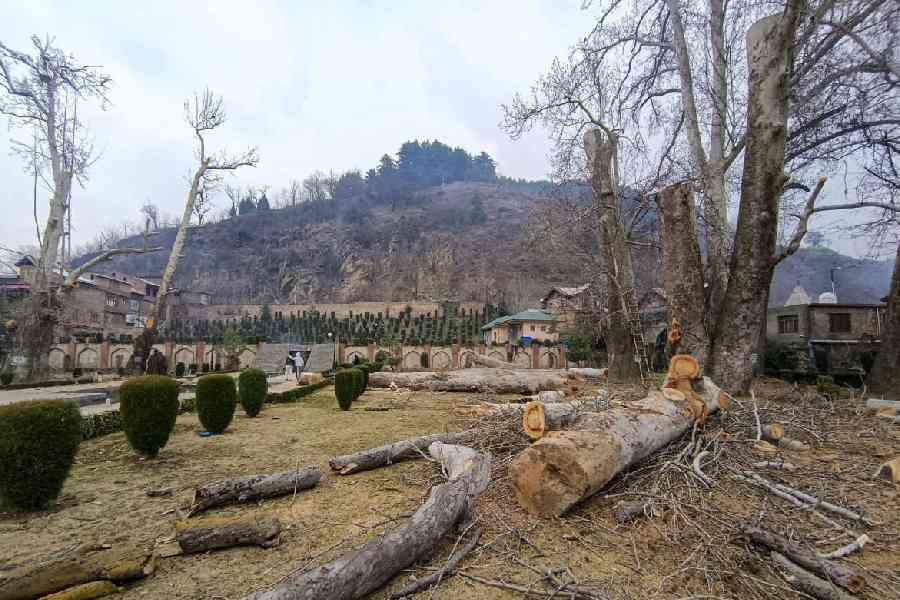The Jammu and Kashmir government on Wednesday faced allegations of illegally felling centuries-old chinar trees at a public park in south Kashmir’s Anantnag although officials said that only “hazardous and diseased branches” had been lopped off or pruned to protect the trees and visitors.
Kashmir prides itself on its iconic chinars, known for their size, colour and allure.
Images of large axed branches of chinars at Anantnag’s Rani Park triggered outrage and led to allegations that they were illegally felled.
The Jammu and Kashmir forest department falls under the purview of the Omar Abdullah government.
Bijbehara MLA Bashir Veeri joined calls for a probe and action against the officials responsible for “chopping off” the trees.
“These pictures must be reported to the National Green Tribunal for cognizance & accountability. Meanwhile, @DCAnantnag should initiate a high-level inquiry, book the culprits for vandalising public property, & impose heavy fines as a deterrent!” he posted on X.
The Environmental Policy Group (EPG), an NGO, condemned “the felling of centuries-old chinar trees” and called it a grave violation of heritage and environment laws.
“These trees, believed to be over 500 years old, hold immense historical, cultural and ecological value. Their destruction represents a blatant violation of the laws established to protect such heritage and a grave injustice to the legacy of Kashmir,” the EPG said in a statement.
Mazhar Mustafa Ansari, the district floriculture officer of Anantnag, denied the allegations that the trees had been felled. “None of the trees was uprooted. We have carried out lopping and pruning of the (diseased) dry branches of eight chinar trees,” Ansari told The Telegraph.
The officer said they had moved an application before the district administration after a branch of a chinar tree fell on a tourist. “She received 14 stitches and luckily survived. We have done it for the safety of the public,” Ansari said.
He said two borer-infected lateral branches that were close to the ground had been “disposed of and this gave an impression that the trees had been felled. The fact is, all of them will survive.”
Borers are pests that attack trees and shrubs by tunnelling into the wood.
Ansari said the trees were approximately 150 to 250 years old.
The EPG claimed this was not an isolated incident and that the widening of the Narbal Delina Road had led to the uprooting of over 100 chinar trees.
The NGO criticised the administration for failing to enforce the Jammu and Kashmir Preservation of Specified Trees Act, 1969, which strictly prohibits the felling of chinars without special permission.
“The chinar is not just a tree, it is an emblem of Kashmir’s identity and a vital ecological asset,” the EPG asserted, emphasising its role in temperature regulation, biodiversity conservation and combating deforestation.
The allegations have surfaced at a time when the Jammu and Kashmir Forest Research Institute and the forest department have geo-tagged over 28,000 chinar trees across the Valley, creating a comprehensive database for their conservation.
Under the geo-tagging process, QR codes have been attached to the surveyed chinar trees to record information on 25 properties, including geographical location, age and health. It enables conservationists to track changes and address the risk factors.
Reckless felling and diseases have been a bane for chinars, dwindling the estimated numbers from around 40,000 some decades ago to 32,000-35,000.
Chinars are usually felled for widening highways and developing urban areas and also for firewood but they are not suitable for furniture-making.











